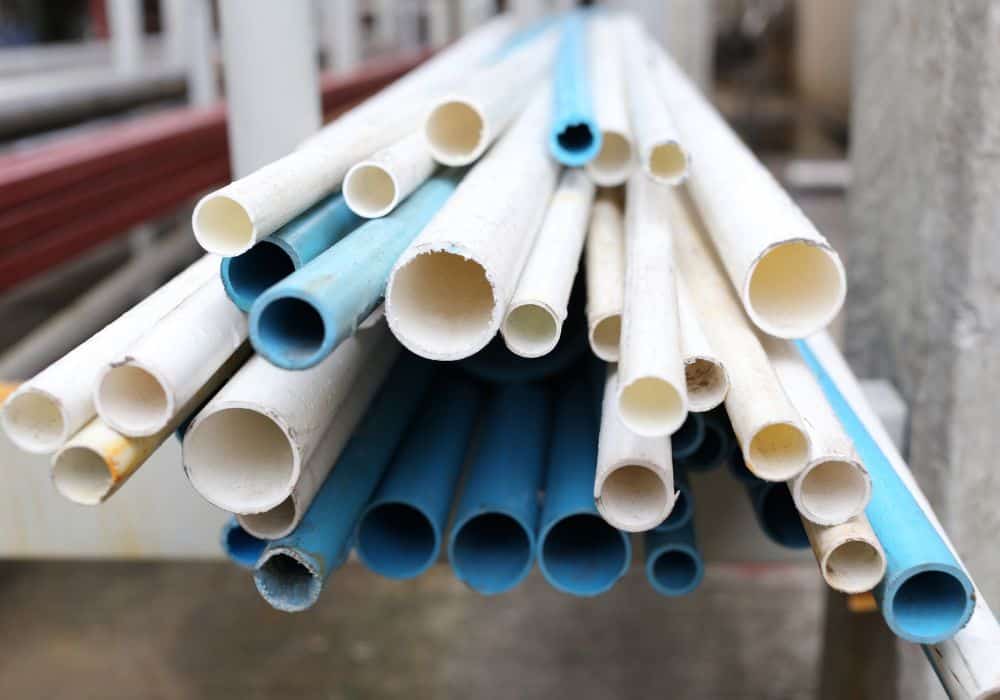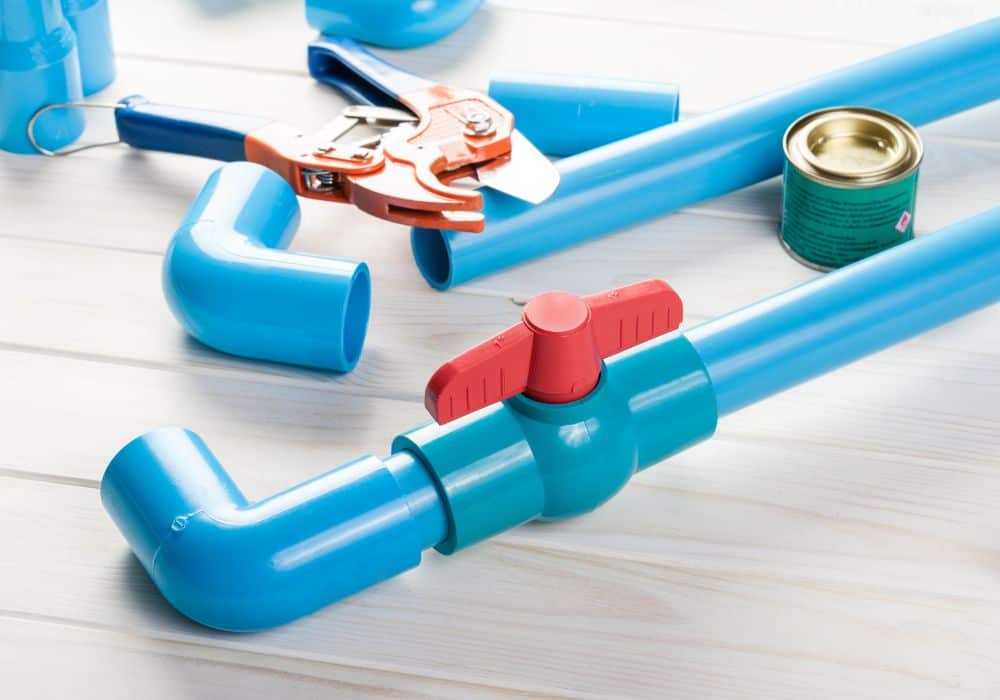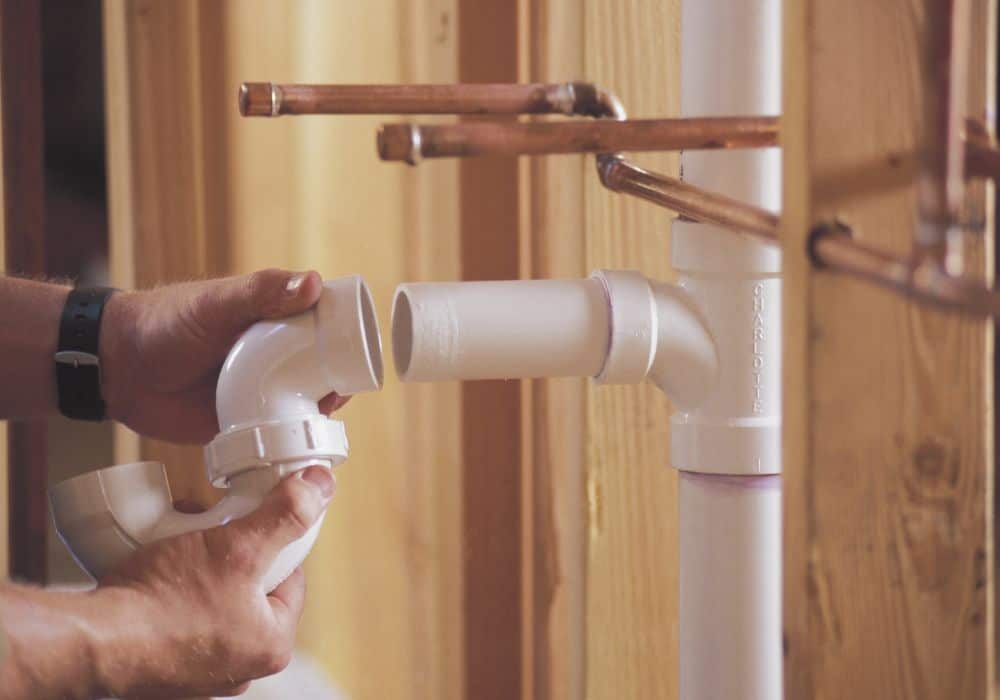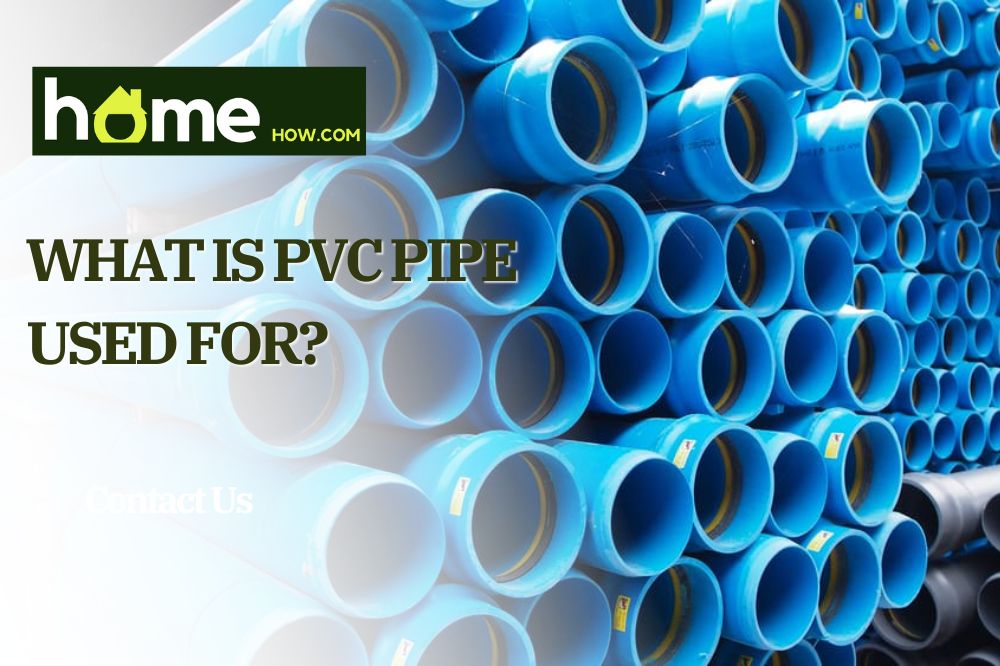PVC pipes refer to thermoplastic pipes made from polyvinyl chloride. These pipes are versatile and durable. Owing to its numerous applications, it is arguably one of the few pipes accepted universally.
PVC pipes are typically used for underground wiring and large-scale irrigation. Also, due to their ability to resist large disruptions or vibrations, they are used in sewage pipes. Furthermore, these pipes are inert and hence used by water corporations for transporting water to residential areas.
In this article, we discuss several applications of PVC pipes, the different types available, what they are made of, their uses, and the pros and cons of using PVC pipes.
Applications of PVC Pipes

PVC is a widely used thermoplastic material that is made from polyvinyl chloride. It can be molded into different forms based on its intended applications.
Some widely used applications of PVC pipes include:
1. Main Water Systems Application
PVC is largely used in main water systems because its unreactive nature does not contaminate the drinking water and delivers it in a safe drinkable state to the intended destination.
2. Electrical Applications
PVC Pipes are also useful in electrical installations; they protect electrical wires and persons that come in contact with them. They equally help to prevent electric current from leaking.
3. Heating and Cooling System Applications
In addition to the applications above, PVC pipes are also used to extend the ductwork of heating and cooling systems. These are made from plastic, and since plastics are poor conductors of heat, they help to insulate and further cool these systems.
4. Building Fire Sprinkler System Applications
PVC pipes can also be used to construct fire sprinklers in buildings. Using PVC pipes such as C-PVC for buildings allows for the seamless connection of pipes and the smooth running of the fire sprinkling systems. They also last longer than their counterpart metal pipes.
5. Telecommunication Systems Applications
U-PVC pipes are especially applicable in telecommunication systems as they are easy to install and preserve the integrity of phone lines.
6. Everyday Applications
Despite its widespread applications, PVC pipes have simple daily applications in everyday life. Some of these applications include: controlling stray cables, extending your vacuum by a fraction, or making a C-clamp.
What Are the Various Types of PVC Pipes?

PVC pipes are commonly divided into four categories.
1. PVC-U
PVC-U stands for unplasticized PVC. It refers to PVC compounds that do not contain plasticizers. This PVC type is rigid and most suitable for pipes and fittings. Pipes made from PVC-U are usually lightweight. They are used in sewers and underground drainages. However, you can also use them to transport safe drinkable water.
2. C-PVC
This stands for chlorinated PVC. Pipes made with Chlorinated PVC share many benefits with those made from unplasticized PVC. However, they can withstand far higher temperatures than pipes made from PVC-U.
3. PVC-O
Pipes made from Molecularly oriented PVC (PVC-O) are designed to convey fluids at high pressures. PVC-O pipes are recyclable.
4. Modified PVC
Common types of modified PVCs are PVC-M, PVC-HI, and PVC-A. Modified PVCs have alloys that improve their toughness and make them resistant to cracking.
Benefits of Using PVC Pipes
Although PVC is a common piping material, its wide use in plumbing and other areas is not without good reason. It has various biological and mechanical properties that make it stand out and qualify it as a suitable construction material. Some of these properties are;
1. Flexibility
PVC pipes are easily molded into different shapes. This property makes them especially suitable for fittings such as valves, branches, clips, and bends.
2. Inertness
PVC pipes are resistant to chemical reactions with external components. They are perfect for transporting drinking water and other sensitive fluids.
3. Less Prone to Stress

PVC pipes are durable as they can withstand large amounts of stress. This is especially important for underground pipes, as there is a lot of pressure on them, and they convey fluids at high pressures.
4. It Is Easily Recycled
Tons of PVC pipes are easily recycled and repurposed to meet other construction needs. It also contains low amounts of carbon and emits fewer harmful substances over time. Additionally, PVC has low production costs when it is mass-produced.
5. Stability
PVC pipes are poor heat conductors and do not rust over time. As a result, they are used in transporting fluids and occasionally find their way to electrical installations. They also generate low friction due to their smooth surface.
Additionally, PVC pipes are lightweight, cost-effective, and easy to install. They can also resist high temperatures and can withstand weather conditions.
How to Install PVC Pipes?
Here are some simple steps to make installing PVC pipes a hassle-free affair.
Step 1: Cut and Measure the Pipe to the Appropriate Length
Depending on what the PVC pipe is intended for, measure the desired length of the pipe and cut appropriately using a power miter saw or any appropriate tool of your choice. Ensure you have a clean, square cut, as it makes installing the pipes much easier.
Uneven, jagged cuts could result in leaks within the pipe, rendering them more difficult to connect.
Step 2: Deburr the Pipe
It is common to discover plastic burrs within the pipe after cutting it. Ensure to remove them, as they could cause a lot of problems in the overall pipe installation. A good way to deburr the pipe is to use a hand sander around the edges until it is smooth. Doing this ensures that your pipes have the perfect fit and prevents possible leaks in the future.
Step 3: Mark Out How the Pipes Should Be Attached
This is a crucial step to make sure your pipes are linked properly. It also helps to prevent mistakes during installation. Marking out the pattern of attaching your pipes is crucial as it saves you time and effort. Carefully map out how each pipe should be attached to the other before applying cement or primer.
Step 4: Connect Your Pipes With Primer and Cement
Before fitting your pipes into each other, apply primer to the interior and rounded end of a PVC pipe. This ensures the pipes have a stronger bond and helps them stay in place for longer.
After applying the primer, spread a generous amount of cement on the pipe and fit both ends together. It would be best to cover each end of the PVC pipe in cement and primer before they can be glued together.
Once this is complete, leave it to dry, and you have successfully installed PVC pipes.
Pros and Cons of Using PVC Pipes
In this section of the article, we discuss the benefits and drawbacks of PVC pipes
1. Pros of Using PVC Pipes
- PVC pipes can be used to extend the lifespan of pipeline systems that would otherwise break down due to age.
- PVC pipes can be used in many diverse ways. For instance, they are used in drainage systems, as well as large and small-scale irrigation systems.
- These pipes require little to no maintenance as they can last for as long as 50 or 100 years.
- You would find that these pipes do wonders for construction work because they are lightweight yet durable and do not jeopardize the strength of the pipes.
- Finally, PVC pipes are more suitable for modern buildings and repairs and do not emit harmful substances over time as iron pipes do.
2. Cons of Using PVC Pipes
Although PVC pipes have a wide range of applications and benefits, they do have some downsides. Here are a few of them.
- The plastic nature of the material makes it susceptible to cracking easily if the pipe is handled carelessly.
- Although PVC pipes can withstand high pressures, they are unsuitable for hot regions. This is because most pipes cannot withstand temperatures above 140F.
- PVC pipes must be completely replaced when they wear out, as the pipes would break into little pieces.
- When installed in unfavorable conditions, it weakens the pipe, which can lead to the eventual failure of the pipe.
FAQs
1. Are PVC Pipes Suitable for Transporting Hot Water?
Although PVC is suitable for water service lines, it is not suitable for transporting hot water. This is because it can not withstand temperatures above 140F.
2. What Is the Average Lifespan of PVC Pipes?
Regular PVCs and C-PVCs last over 50 years when properly installed in favorable conditions.
3. Are PVC Pipes a Suitable Choice for Plumbing?
PVC pipes are a great choice for bathrooms, sinks, and toilets as they are easy to work with and do not rust over time.
Conclusion
Judging from all that has been discussed in this article, PVC pipes are essential in our everyday lives and are not limited to a few aspects. Its uses range from waste control and household buildings to the transportation of chemicals and the manufacture of healthcare items.
